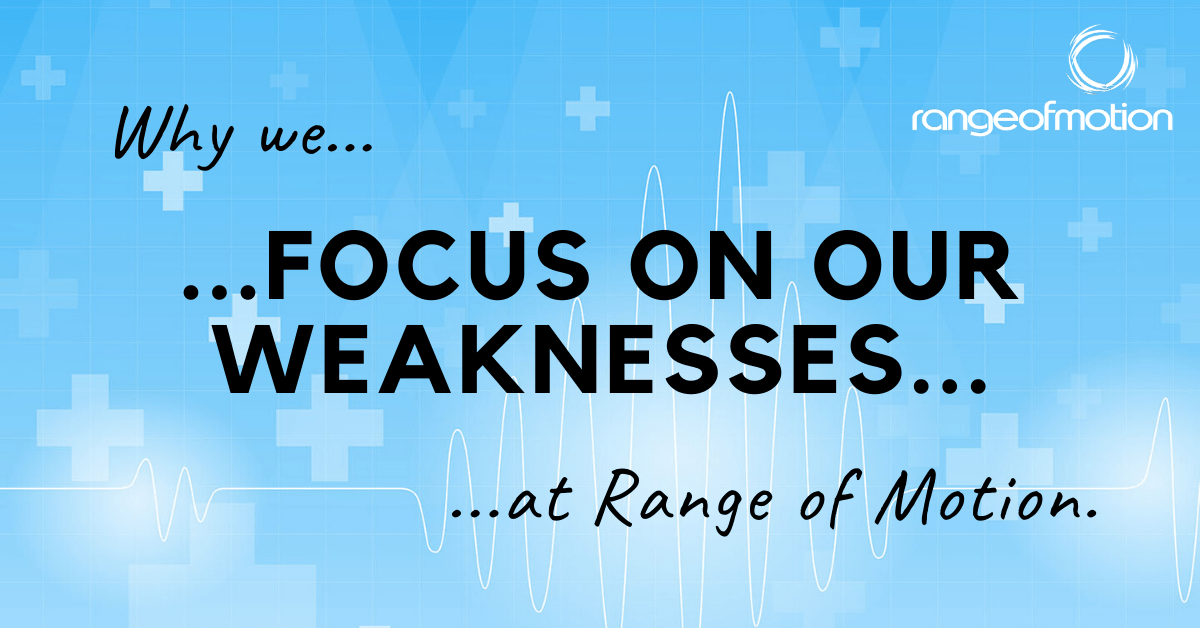Why we focus on our weaknesses at Range of Motion
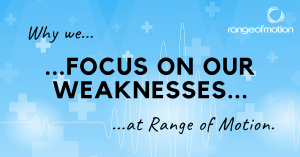 At Range of Motion, we spend a lot of time working on the things that we’re worst at.
At Range of Motion, we spend a lot of time working on the things that we’re worst at.
And it’s for good reason.
We know that it’s the things we struggle with the most are not only the easiest things for us to improve, but they’re also the most important things to work on for our long term health, fitness and performance.
The best way to understand why this is so important, is to understand the Range of Motion Model of Health – our foundational document that underpins everything we do at Range of Motion.
The model resembles a ‘wagon wheel’ with individual spokes. Each spoke is required to keep the wheel circular. Should one spoke fail (even thought the others are still present), the wheel will change shape and cease to complete its function.
The Range of Motion Model of Health operates in the same way. Each spoke represents a component of health, fitness or performance.
The more spokes that are included in the model, the more complete a picture of your health we can create. To learn about why more spokes are important, read ‘Why we draw from so many different fields of exercise at Range of Motion‘.
Any health, fitness or performance metric can be given a spoke, with the model conceivably having an almost infinite number of arms. The individual spokes may be components of physical fitness like strength or cardiorespiratory endurance; clinical measures like blood pressure or cholesterol; psychological measures like stress or depression; or body composition measures like body fat percentage or lean muscle mass.
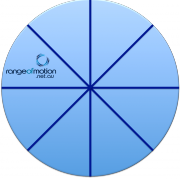
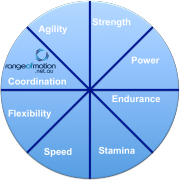
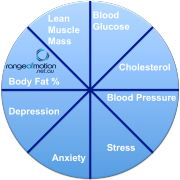
Each of these variables and many more can be given a score. We can put a dot on that spoke – either close to the middle of the wheel (if it’s a 1/10) or nearer the outside if it’s closer to a 10/10.
The more measures of health and fitness that are added, the more spokes the wheel will grow, and the better picture we get of your health. Once we have a complete wagon wheel, we can join the dots, and get an overall picture of your health.
Once we have that picture, it’s very quickly obvious which spokes need work. These are the spokes that will be of most damage to your overall health.
Should any spoke of the Model of Health fail (regardless of the strength of the other spokes), it will compromise your lifespan (how long you live), your healthspan (how WELL you live), and (if you’re an athlete) your performance.
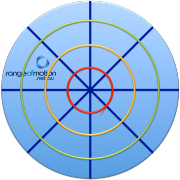

This paints a very clear picture of your health and fitness, and where we need to focus our efforts to get the maximum return. The aim is first to create as perfect a circle as possible, and once this has been achieved, to make the circle as ‘big’ as possible and thus maximising the volume of the circle (your health, fitness and performance).
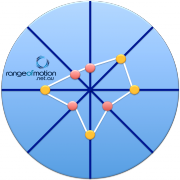


So what do we do with this information? What do we do with the completed wheel?
Quite simply, we spend more time doing the sorts of exercise that will strengthen the weaker spokes.
You can learn more about this by reading ‘Why we have an individualised approach to exercise at Range of Motion‘. And if you’re interested in how these spokes actually become your exercise program, check out ‘Why we profile your health and fitness at Range of Motion‘.
Because, as we progress through life, the wheel turns – and the spokes are tested.
Jumping out of the way of a vehicle will test a ‘speed’ spoke. Surviving a fall may test a ‘bone mineral density’ spoke. Dealing with hardship may test a ‘stress’ spoke. A 5km run tests a cardiorespiratory endurance spoke. Olympic Lifting tests a power spoke. Limitless components and scenarios exist.
These spokes may not be tested every day, every month, or even every year. But they will be tested. You cannot predict when, where or how. Regardless of the strength of the other measures, if an individual spoke fails, the wheel will cease to turn.
It’s our job to keep the wheel turning, to chase balance. We do this by ensuring that we are constantly working on our weaknesses, whatever they may be, to maximise our overall health.

